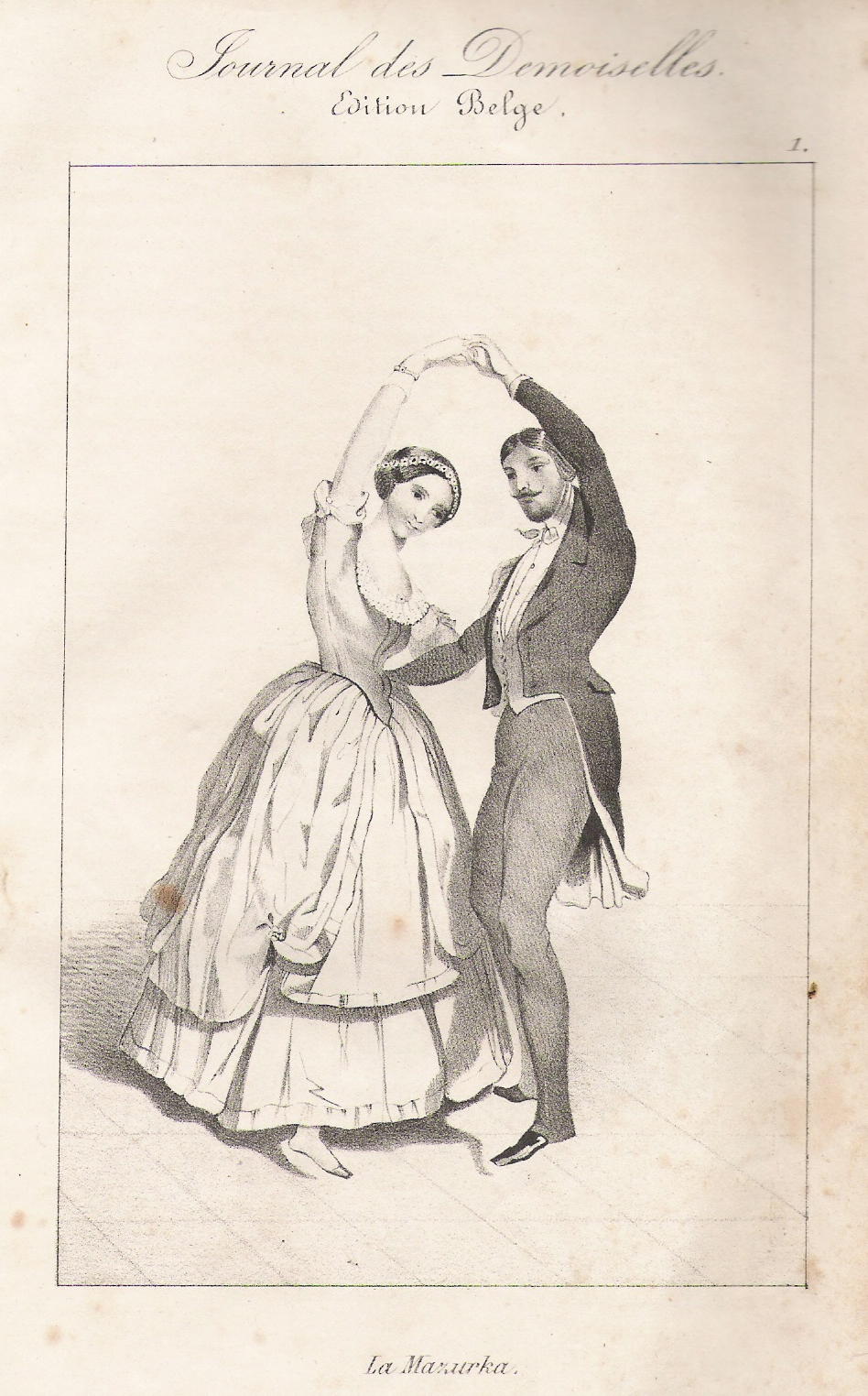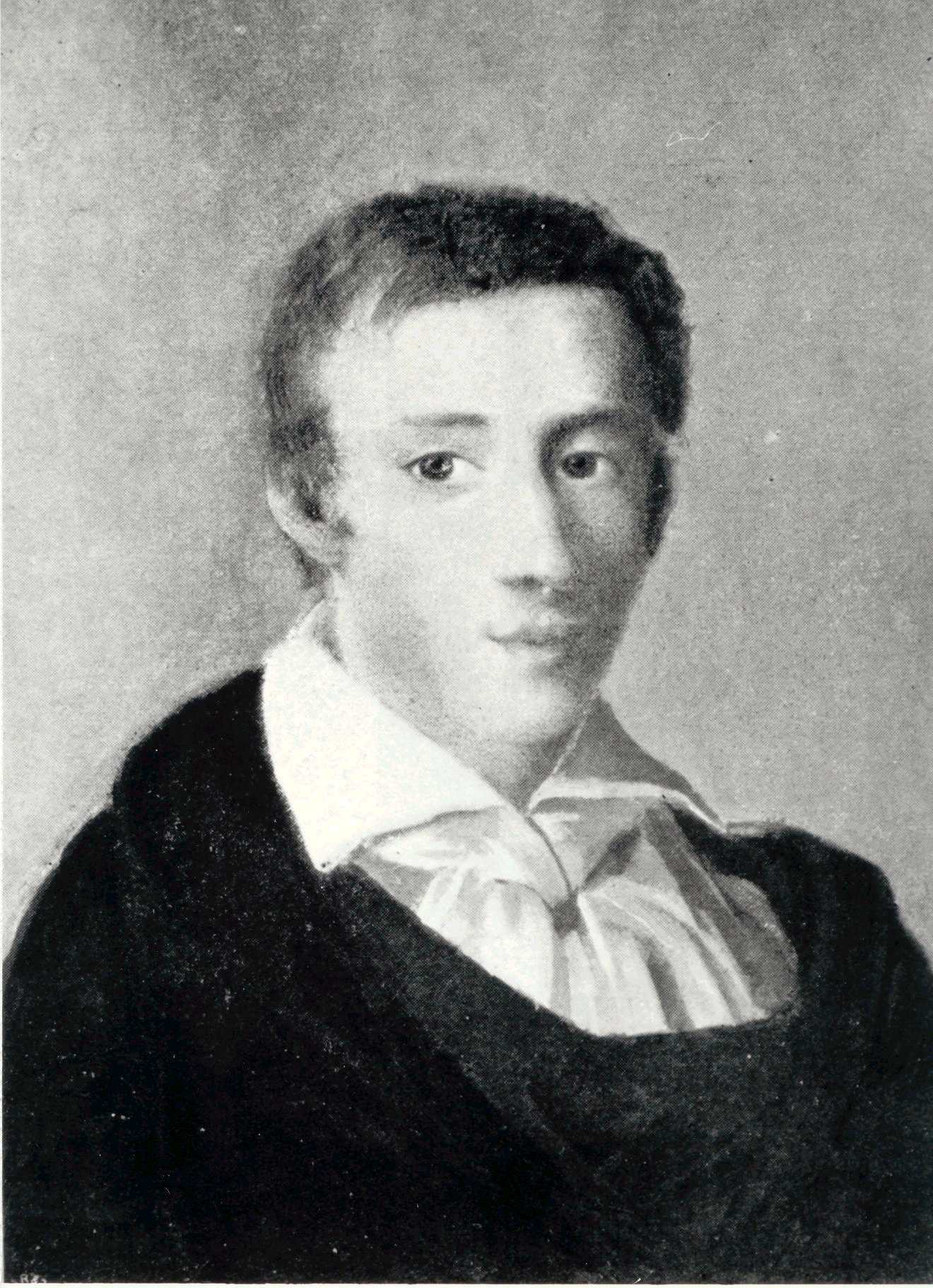|
Mazurka
The Mazurka ( Polish: ''mazurek'') is a Polish musical form based on stylised folk dances in triple meter, usually at a lively tempo, with character defined mostly by the prominent mazur's "strong accents unsystematically placed on the second or third beat". The Mazurka, alongside the polka dance, became popular at the ballrooms and salons of Europe in the 19th century, particularly through the notable works by Frédéric Chopin. The mazurka (in Polish ''mazur'', the same word as the mazur) and mazurek (rural dance based on the mazur) are often confused in Western literature as the same musical form. History The folk origins of the ''Mazurk'' are three Polish folk dances which are: * '' mazur'', most characteristic due to its inconsistent rhythmic accents, * slow and melancholic '' kujawiak'', * fast '' oberek''. The ''mazurka'' is always found to have either a triplet, trill, dotted eighth note (quaver) pair, or an ordinary eighth note pair before two quarter notes ( ... [...More Info...] [...Related Items...] OR: [Wikipedia] [Google] [Baidu] |
Mazurkas (Chopin)
Over the years 1825–1849, Frédéric Chopin wrote at least 59 compositions for piano called Mazurkas. Mazurka refers to one of the mazurka, traditional Polish dances. * 58 have been published ** 45 during Chopin's lifetime, of which 41 have opus numbers (with the remaining four works being two early mazurkas from 1826 and the famous "Notre Temps" and "Émile Gaillard" mazurkas that were published individually in 1841) ** 13 posthumously, of which 8 have posthumous opus numbers (specifically, Opp. 67 & 68) * 11 further mazurkas are known whose manuscripts are either in private hands (2) or untraced (at least 9). The serial numbering of the 58 published mazurkas normally goes only up to 51. The remaining 7 are referred to by their key (music), key or catalogue number. Chopin's composition of these mazurkas signaled new ideas of nationalism. Origins Chopin based his mazurkas on the Music of Poland, traditional Polish folk dance, also called the mazurka (or "mazur" in Polish). How ... [...More Info...] [...Related Items...] OR: [Wikipedia] [Google] [Baidu] |
Frédéric Chopin
Frédéric François Chopin (born Fryderyk Franciszek Chopin; 1 March 181017 October 1849) was a Polish composer and virtuoso pianist of the Romantic period who wrote primarily for Piano solo, solo piano. He has maintained worldwide renown as a leading composer of his era whose "poetic genius was based on a professional technique that was without equal in his generation". Chopin was born in Żelazowa Wola and grew up in Warsaw, which in 1815 became part of Congress Poland. A child prodigy, he completed his musical education and composed his early works in Warsaw before leaving Poland at age 20, less than a month before the outbreak of the November Uprising, November 1830 Uprising; at 21, he settled in Paris. Thereafter he gave only 30 public performances, preferring the more intimate atmosphere of the Salon (gathering), salon. He supported himself, selling his compositions and giving piano lessons, for which he was in high demand. Chopin formed a friendship with Franz Liszt ... [...More Info...] [...Related Items...] OR: [Wikipedia] [Google] [Baidu] |
Kujawiak
The kujawiak is a Polish folk dance from the region of Kuyavia (Kujawy) in central Poland.Don Michael Randel. ''The Harvard Dictionary of Music''. Harvard University Press. 2003. p. 449. It is one of the five national dances of Poland, the others being the krakowiak, Mazur (dance), mazur, oberek, and polonaise (dance), polonaise. The music is in triple meter, and is characterized by its Tempo rubato, rubato tempo and calm, lyrical nature. The dance typically involves couples walking gracefully in a quarter-note rhythm, on slightly bended knees, with relaxed turns, around a circle. History The name "kujawiak", as a reference to the dance, first appeared in 1827, in T.F. Jaskólski's composition ''Pasterze na Bachorzy. Sielanki Kujawskie''. It is argued that the dance was developed from the mazur between 1750 and 1830. In 1841, Leon Zienkowicz described the kujawiak as a "regional variety of the mazurka relying on the domination of the minor key". The majority of the ... [...More Info...] [...Related Items...] OR: [Wikipedia] [Google] [Baidu] |
Henryk Wieniawski
Henryk Wieniawski (; 10 July 183531 March 1880) was a Polish virtuoso violinist, composer, and pedagogue, who is regarded amongst the most distinguished violinists in history. His younger brother Józef Wieniawski and nephew :pl:Adam Tadeusz Wieniawski, Adam Tadeusz Wieniawski were also accomplished musicians, as was his daughter Régine, who became a naturalised British subject upon marrying into the peerage and wrote music under the name Poldowski. Life Early life Henryk Wieniawski was born in Lublin, in present-day Poland. His father, Tobiasz Pietruszka né Wolf Helman, was the son of a History of the Jews in Poland, Jewish barber named Herschel Meyer Helman, from Lublin's Jewish neighborhood of Wieniawa. Wolf Helman later changed his name to Tadeusz Wieniawski, taking on the name of his neighborhood to blend into the Polish environment. Prior to obtaining his medical degree, he had converted to Catholicism. He married Regina Wolff, the daughter of a noted Jewish physician fro ... [...More Info...] [...Related Items...] OR: [Wikipedia] [Google] [Baidu] |
Oberek
The oberek, also known as obertas or ober, is a lively Polish dance in triple metre. Its name is derived from the Polish ''obracać się'', meaning "to spin". It consists of many dance lifts and jumps. It is performed at a much quicker pace than the Polish waltz and is one of the national dances of Poland. Polish oberek (folk) The oberek, in its original form, is a Polish folk dance and is the fastest of the Five National Dances of Poland. The Five National Dances are: polonez (polonaise), mazur (mazurka), kujawiak, krakowiak (cracovienne) and oberek. The oberek consists of quick steps and constant turns. The beauty of the oberek depends on each individual dancer's talent of spinning at the fast tempo of the oberek, which shares some steps with the mazur. The music for the oberek was typically performed by a small village band, kapela, dominated by the violin in central Polan Polish-American oberek (social) The Polish-American oberek is a social dance, originally brought to ... [...More Info...] [...Related Items...] OR: [Wikipedia] [Google] [Baidu] |
Mazur (dance)
The Mazur is a Polish folk and ballroom dance with origins in the region of Mazovia. It is one of the five Polish national dances. History The Mazur was known in Poland already in the 15th century and by the 17th century it became a popular court dance. Dance The Mazur is performed in 3/4 or 3/8 time and lively tempo. It is characterized by its tendency to accent the second or third beat and a rhythmic figure of a 4-syllable group, consisting of two quavers (eighth notes) and two crotchets (quarter notes), and is a joyful, dynamic dance. The man leading the Mazur is called a "wodzirej". See also *Mazurka The Mazurka ( Polish: ''mazurek'') is a Polish musical form based on stylised folk dances in triple meter, usually at a lively tempo, with character defined mostly by the prominent mazur's "strong accents unsystematically placed on the seco ... References Polish dances {{Poland-stub ... [...More Info...] [...Related Items...] OR: [Wikipedia] [Google] [Baidu] |
Maria Agata Szymanowska
Maria Szymanowska (Polish pronunciation: ; born Marianna Agata Wołowska; Warsaw, 14 December 1789 – 25 July 1831, St. Petersburg, Russia) was a Polish composer and one of the first professional virtuoso pianists of the 19th century. She toured extensively throughout Europe, especially in the 1820s, before settling permanently in St. Petersburg. In the Russian imperial capital, she composed for the court, gave concerts, taught music, and ran an influential salon. Her compositions—largely piano pieces, songs, and other small chamber works, as well as the first piano concert etudes and nocturnes in Poland—typify the ' of the era preceding Frédéric Chopin. She was the mother of Celina Szymanowska, who married the Polish Romantic poet Adam Mickiewicz. Biography Marianna Agata Wołowska was born in Warsaw, Poland, on 14 December 1789 into a prosperous Polish family with Frankist Jewish roots, one of her ancestors being Salomon Ben Elijah (or Jacob ben Judah Leib/Jacob Leib ... [...More Info...] [...Related Items...] OR: [Wikipedia] [Google] [Baidu] |
Alexander Scriabin
Alexander Nikolayevich Scriabin, scientific transliteration: ''Aleksandr Nikolaevič Skrjabin''; also transliterated variously as Skriabin, Skryabin, and (in French) Scriabine. The composer himselused the French spelling "Scriabine" which was also the most popular spelling used in English-language publications during his lifetime. First editions of his works used the RomanizationsScriabine,Scriàbine, andSkrjábin"., group=n () was a Russian composer and pianist. Before 1903, Scriabin was greatly influenced by the music of Frédéric Chopin and composed in a relatively tonal, late- Romantic idiom. Later, and independently of his influential contemporary Arnold Schoenberg, Scriabin developed a much more dissonant musical language that had transcended usual tonality but was not atonal, which accorded with his personal brand of metaphysics. Scriabin found significant appeal in the concept of Gesamtkunstwerk as well as synesthesia, and associated colours with the various harmonic t ... [...More Info...] [...Related Items...] OR: [Wikipedia] [Google] [Baidu] |
Mazurek (cake)
Mazurek is a very sweet, flat cake baked in Poland for Easter. According to Polish gastronomy coursebooks, typical ''mazurek'' is a cake that can be made of one or two sheets of short (or half-short) pastry or one sheet of short (or half-short) pastry covered with a sheet of butter sponge cake. The two sheets are fixed together with a help of a layer of marmalade. In case of one-sheet version, marmalade is skipped or goes on top, under the layer of icing. The top of ''mazurek'' is covered with a layer of icing (i.e. sugar icing or kajmak) or jelly. It is also decorated with nut-based icing or almond-based icing and candied fruits. Traditionally, home-baked ''mazurek'' cakes are often decorated with dried fruits and nuts. In the one-sheet version, the cake includes the borders made of rolled half-short pastry. Sometimes the shortcrust base is crowned with a lattice made of half-short or macaroon pastry. Among other versions, often to be found in popular cook books and gast ... [...More Info...] [...Related Items...] OR: [Wikipedia] [Google] [Baidu] |
Karol Szymanowski
Karol Maciej Szymanowski (; 3 October 188229 March 1937) was a Polish composer and pianist. He was a member of the modernism (music), modernist Young Poland movement that flourished in the late 19th and early 20th century. Szymanowski's early works show the influence of the late Romantic music, Romantic German school as well as the early works of Alexander Scriabin, as exemplified by his Étude Op. 4 No. 3 and his first two symphonies. Later, he developed an impressionist music, impressionistic and partially atonal style, represented by such works as the Symphony No. 3 (Szymanowski), Third Symphony and his Violin Concerto No. 1 (Szymanowski), Violin Concerto No. 1. His third period was influenced by the folk music of the Polish Gorals, Górale people, including the ballet ''Harnasie'', the Fourth Symphony, and his sets of Mazurkas for piano. ''King Roger,'' composed between 1918 and 1924, remains Szymanowski's most popular opera. His other significant works include ''Hagith (oper ... [...More Info...] [...Related Items...] OR: [Wikipedia] [Google] [Baidu] |






